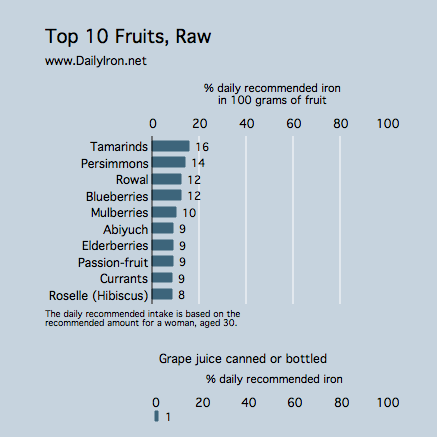Grape juice contains .25 milligrams of iron per 100 grams. Grams is a measure of weight. To put 100 grams in perspective, consider alternative measures for this food:
- 1 cup equals 253 grams.
- 1 fl oz equals 31 grams.
In the category of fruit, we excluded dried fruit from the Top 10 list and include only fresh fruit. You can assume that if the fresh version made the top 10 list, so too would the dried version.The food tested for the particular graph below can be described more specifically as:
Grape juice, canned or bottled, unsweetened, without added ascorbic acid
Read more about iron in fruit or visit our iron-rich foods list.

Fruit on the whole is not a strong source of iron but it can play a definite role in your ability to absorb iron. Fruit often times is high in vitamin C and vitamin C will actually help you utilize the iron better in non-meat food items; grape juice is a modest source of vitamin C.
However, for example you may wish to include peppers and tomatoes with a grain-based main dish or with legumes to improve your absorption of the iron in your meal as a whole. A raw strawberry dessert along with your meal would help as well because of the vitamins in the fruit. A glass of fruit juice is another smart strategy. Read more about how these vitamin C fruits reduce the impact of foods that inhibit iron in your diet despite the fact that they contain little or virtually no iron themselves.